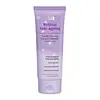What's inside
What's inside
 Key Ingredients
Key Ingredients

 Benefits
Benefits

 Concerns
Concerns

 Ingredients Side-by-side
Ingredients Side-by-side

Citrus Junos Fruit Extract 90%
Skin ConditioningNiacinamide 5%
Smoothing1,2-Hexanediol
Skin ConditioningDipropylene Glycol
HumectantButylene Glycol
HumectantWater
Skin ConditioningMelaleuca Alternifolia Leaf Water
AntimicrobialThuja Orientalis Leaf Extract
AntioxidantZanthoxylum Piperitum Fruit Extract
Skin ConditioningPolygonum Cuspidatum Root Extract
AntioxidantCentella Asiatica Extract
CleansingArtemisia Princeps Leaf Extract
Skin ConditioningNelumbo Nucifera Flower Extract
Skin ConditioningCoptis Japonica Extract
AntimicrobialArbutin
AntioxidantBisabolol
MaskingGlutathione
Biotin
AntiseborrhoeicAscorbic Acid
AntioxidantAscorbyl Glucoside
AntioxidantAscorbyl Tetraisopalmitate
AntioxidantTocopherol
AntioxidantPanthenol
Skin ConditioningCyanocobalamin
Skin ConditioningMenadione
MaskingMadecassoside
AntioxidantMadecassic Acid
Skin ConditioningAsiaticoside
AntioxidantAsiatic Acid
Skin ConditioningArginine
MaskingAdenosine
Skin ConditioningEthylhexyl Olivate
Skin ConditioningCetearyl Olivate
Sorbitan Olivate
EmulsifyingPolyglyceryl-4 Oleate
EmulsifyingC12-13 Pareth-9
EmulsifyingCarbomer
Emulsion StabilisingAmmonium Acryloyldimethyltaurate/Vp Copolymer
Sodium Acrylates Copolymer
Benzyl Glycol
SolventEthylhexylglycerin
Skin ConditioningRaspberry Ketone
MaskingCitrus Junos Peel Oil
AstringentMelaleuca Alternifolia Leaf Oil
AntioxidantLinalool
PerfumingLimonene
PerfumingCitrus Junos Fruit Extract 90%, Niacinamide 5%, 1,2-Hexanediol, Dipropylene Glycol, Butylene Glycol, Water, Melaleuca Alternifolia Leaf Water, Thuja Orientalis Leaf Extract, Zanthoxylum Piperitum Fruit Extract, Polygonum Cuspidatum Root Extract, Centella Asiatica Extract, Artemisia Princeps Leaf Extract, Nelumbo Nucifera Flower Extract, Coptis Japonica Extract, Arbutin, Bisabolol, Glutathione, Biotin, Ascorbic Acid, Ascorbyl Glucoside, Ascorbyl Tetraisopalmitate, Tocopherol, Panthenol, Cyanocobalamin, Menadione, Madecassoside, Madecassic Acid, Asiaticoside, Asiatic Acid, Arginine, Adenosine, Ethylhexyl Olivate, Cetearyl Olivate, Sorbitan Olivate, Polyglyceryl-4 Oleate, C12-13 Pareth-9, Carbomer, Ammonium Acryloyldimethyltaurate/Vp Copolymer, Sodium Acrylates Copolymer, Benzyl Glycol, Ethylhexylglycerin, Raspberry Ketone, Citrus Junos Peel Oil, Melaleuca Alternifolia Leaf Oil, Linalool, Limonene
Water
Skin ConditioningMyristic Acid
CleansingGlycerin
HumectantPalmitic Acid
EmollientPotassium Hydroxide
BufferingLauric Acid
CleansingPolyglyceryl-4 Stearate
EmulsifyingSorbitol
HumectantStearic Acid
CleansingCocamidopropyl Betaine
CleansingGlycol Distearate
EmollientButylene Glycol
HumectantPolyquaternium-7
Phenoxyethanol
PreservativeParfum
MaskingAcrylates Copolymer
Cetearyl Alcohol
EmollientSodium Chloride
MaskingSodium Hydroxide
Buffering3-O-Ethyl Ascorbic Acid
Skin ConditioningNiacinamide
SmoothingSodium Hyaluronate
HumectantTocopheryl Acetate
AntioxidantEthylhexylglycerin
Skin ConditioningTetrasodium EDTA
Polysorbate 20
EmulsifyingRetinol
Skin ConditioningSodium Benzoate
Masking1,2-Hexanediol
Skin ConditioningNigella Sativa Seed Extract
PerfumingBHT
AntioxidantMicrocitrus Australasica Fruit Extract
BHA
AntioxidantSaccharomyces/Xylinum/Black Tea Ferment
Skin ConditioningWater, Myristic Acid, Glycerin, Palmitic Acid, Potassium Hydroxide, Lauric Acid, Polyglyceryl-4 Stearate, Sorbitol, Stearic Acid, Cocamidopropyl Betaine, Glycol Distearate, Butylene Glycol, Polyquaternium-7, Phenoxyethanol, Parfum, Acrylates Copolymer, Cetearyl Alcohol, Sodium Chloride, Sodium Hydroxide, 3-O-Ethyl Ascorbic Acid, Niacinamide, Sodium Hyaluronate, Tocopheryl Acetate, Ethylhexylglycerin, Tetrasodium EDTA, Polysorbate 20, Retinol, Sodium Benzoate, 1,2-Hexanediol, Nigella Sativa Seed Extract, BHT, Microcitrus Australasica Fruit Extract, BHA, Saccharomyces/Xylinum/Black Tea Ferment
 Reviews
Reviews

Ingredients Explained
These ingredients are found in both products.
Ingredients higher up in an ingredient list are typically present in a larger amount.
1,2-Hexanediol is a synthetic liquid and another multi-functional powerhouse.
It is a:
- Humectant, drawing moisture into the skin
- Emollient, helping to soften skin
- Solvent, dispersing and stabilizing formulas
- Preservative booster, enhancing the antimicrobial activity of other preservatives
Butylene Glycol (or BG) is used within cosmetic products for a few different reasons:
Overall, Butylene Glycol is a safe and well-rounded ingredient that works well with other ingredients.
Though this ingredient works well with most skin types, some people with sensitive skin may experience a reaction such as allergic rashes, closed comedones, or itchiness.
Learn more about Butylene GlycolEthylhexylglycerin (we can't pronounce this either) is commonly used as a preservative and skin softener. It is derived from glyceryl.
You might see Ethylhexylglycerin often paired with other preservatives such as phenoxyethanol. Ethylhexylglycerin has been found to increase the effectiveness of these other preservatives.
Niacinamide is a multitasking form of vitamin B3 that strengthens the skin barrier, reduces pores and dark spots, regulates oil, and improves signs of aging.
And the best part? It's gentle and well-tolerated by most skin types, including sensitive and reactive skin.
You might have heard of "niacin flush", or the reddening of skin that causes itchiness. Niacinamide has not been found to cause this.
In very rare cases, some individuals may not be able to tolerate niacinamide at all or experience an allergic reaction to it.
If you are experiencing flaking, irritation, and dryness with this ingredient, be sure to double check all your products as this ingredient can be found in all categories of skincare.
When incorporating niacinamide into your routine, look out for concentration amounts. Typically, 5% niacinamide provides benefits such as fading dark spots. However, if you have sensitive skin, it is better to begin with a smaller concentration.
When you apply niacinamide to your skin, your body converts it into nicotinamide adenine dinucleotide (NAD). NAD is an essential coenzyme that is already found in your cells as "fuel" and powers countless biological processes.
In your skin, NAD helps repair cell damage, produce new healthy cells, support collagen production, strengthen the skin barrier, and fight environmental stressors (like UV and pollution).
Our natural NAD levels start to decline with age, leading to slower skin repair, visible aging, and a weaker skin barrier. By providing your skin niacinamide, you're recharging your skin's NAD levels. This leads to stronger, healthier, and younger looking skin.
Another name for vitamin B3 is nicotinamide. This vitamin is water-soluble and our bodies don't store it. We obtain Vitamin B3 from either food or skincare. Meat, fish, wheat, yeast, and leafy greens contain vitamin B3.
The type of niacinamide used in skincare is synthetically created.
Learn more about NiacinamideWater. It's the most common cosmetic ingredient of all. You'll usually see it at the top of ingredient lists, meaning that it makes up the largest part of the product.
So why is it so popular? Water most often acts as a solvent - this means that it helps dissolve other ingredients into the formulation.
You'll also recognize water as that liquid we all need to stay alive. If you see this, drink a glass of water. Stay hydrated!
Learn more about Water